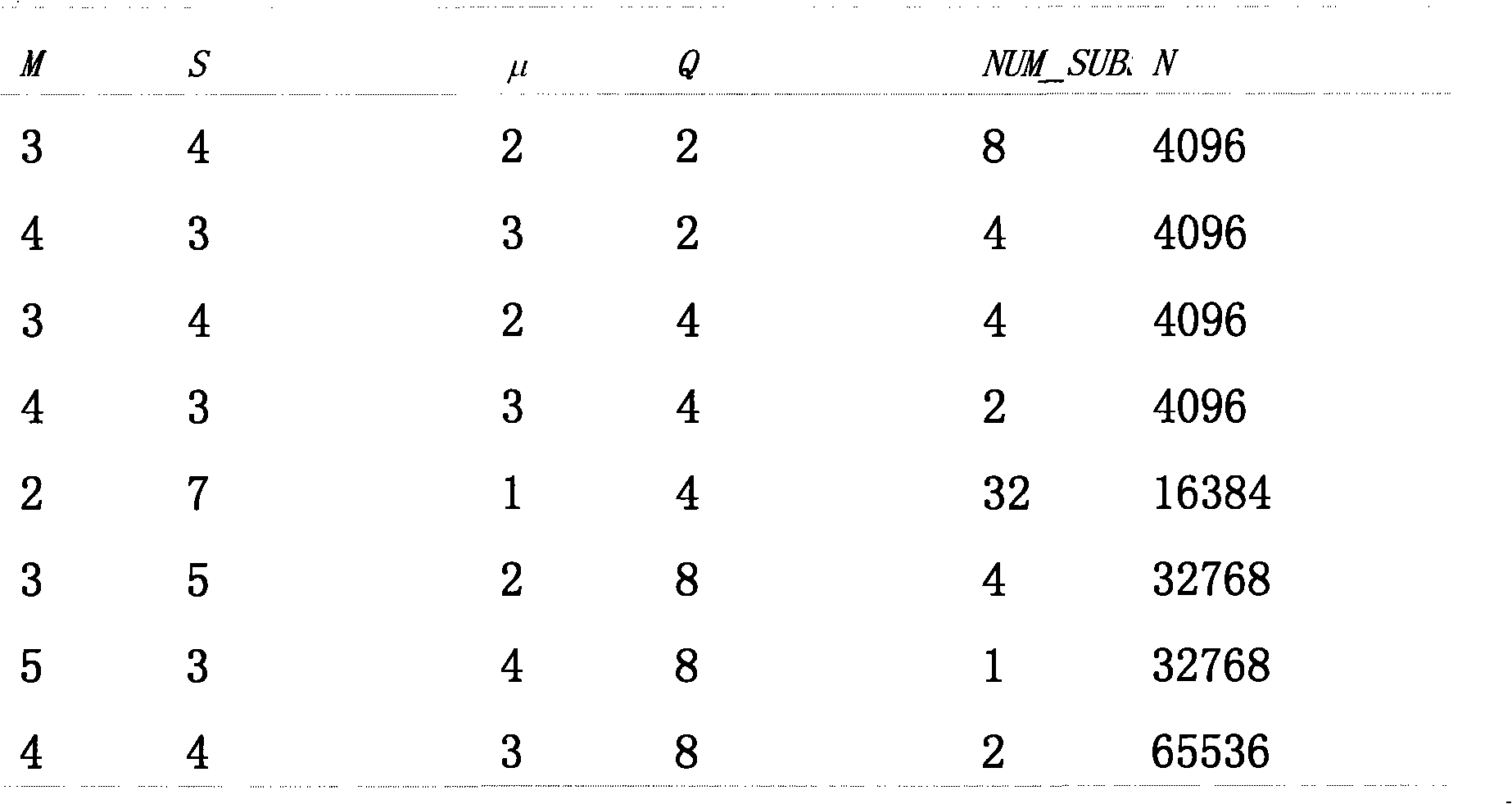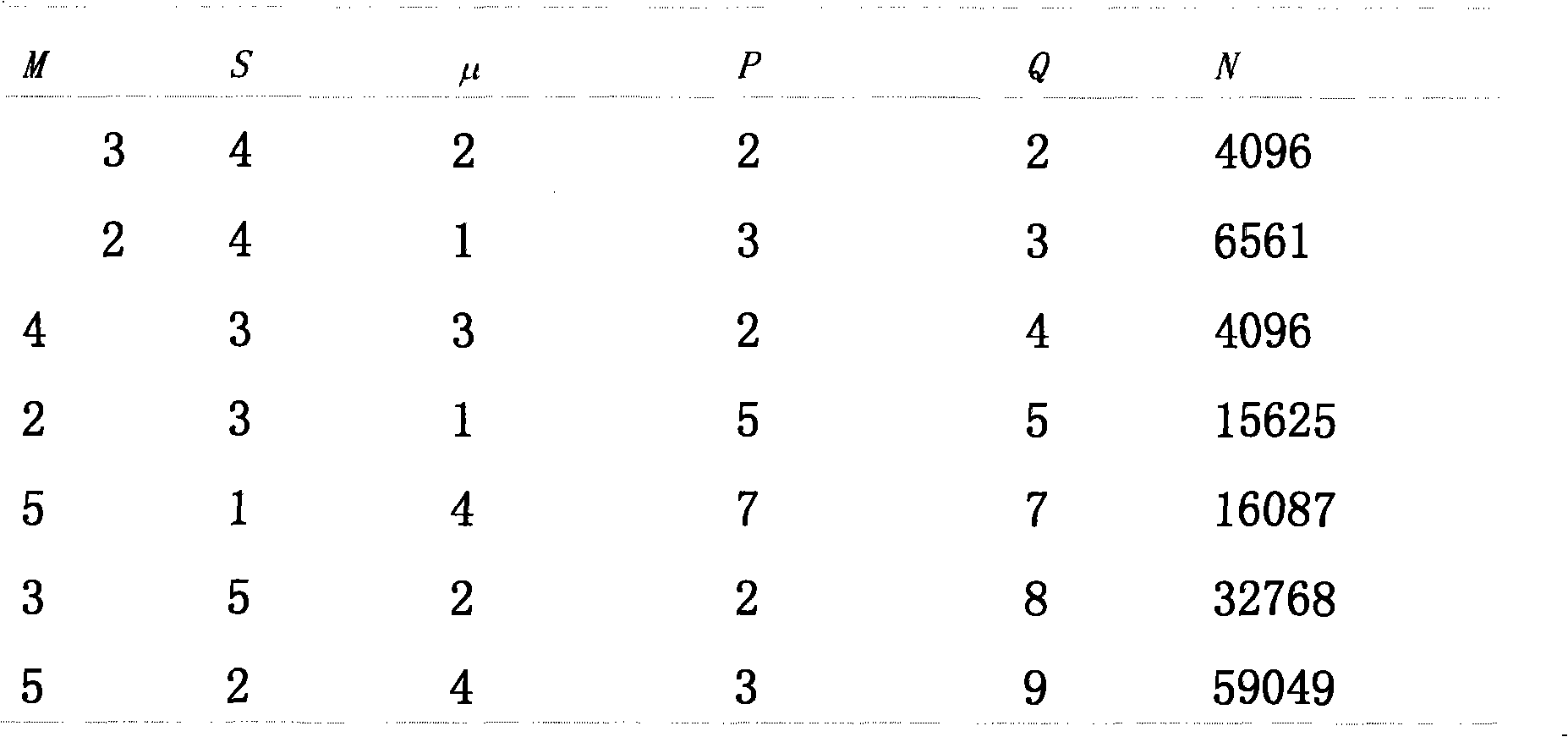Decomposable LDPC code coding method based on euclidean geometry
A technology of LDPC codes and coding methods, which is applied in the direction of preventing/detecting errors through diversity reception, digital transmission systems, electrical components, etc., can solve problems such as the construction of LDPC codes that cannot be solved, and achieve the effect of reducing complexity
- Summary
- Abstract
- Description
- Claims
- Application Information
AI Technical Summary
Problems solved by technology
Method used
Image
Examples
Embodiment 1
[0031] 1) Select a suitable Euclidean space:
[0032] It is assumed that the code word transmission adopts the M-ary modulation mode, so there are M constellation points in the signal constellation diagram. Each constellation point is represented by q bits, and the multi-level coding is composed of q component codes. Select the appropriate Euclidean space EG(m, 2 according to the code length n of the LDPC code to be constructed. s ), making the number of all points in this space 2 ms =n.
[0033] 2) Select the appropriate q value according to the modulation factor:
[0034] Consider EG(m,2 s ) space in each μ-dimensional subspace, as we can see from the front, each subspace contains 2 μs points, and there will be 2 (m-μ)s -1 μ-dimensional subspace and it form a set of μ-dimensional parallel subspaces. Put the 2 in the whole space ms We can divide the points into q groups according to the modulation method, and the grouping set uses C q to represent, so C q The number...
Embodiment 2
[0058] The previous implementations were based on GF(2 s ) of the extended domain, so there will be certain restrictions on the selection of the length of the codeword and the selection of the modulation coefficient, then it can be constructed based on the definition in GF(p s ) on the Euclidean space EG(m,p s ), so that the number of points in the space is p ms , according to the modulation parameter q, choose p appropriately so that the number of points in each group is p ms / q, generally p and q satisfy the following relationship:
[0059] p t =q (t=1,2...) (7)
[0060] Based on the definition in GF(p s ) on the Euclidean space EG(m,p s ) method of constructing LDPC codes is based on the definition in GF(2 s EG(m,2 ) on s )it's the same. In this way, this method constructs a large class of decomposable LDPC codes. Table 2 lists the selection of p and the selection of other parameters under different modulation modes.
[0061] Table 2: Parameter selection under di...
PUM
 Login to View More
Login to View More Abstract
Description
Claims
Application Information
 Login to View More
Login to View More - Generate Ideas
- Intellectual Property
- Life Sciences
- Materials
- Tech Scout
- Unparalleled Data Quality
- Higher Quality Content
- 60% Fewer Hallucinations
Browse by: Latest US Patents, China's latest patents, Technical Efficacy Thesaurus, Application Domain, Technology Topic, Popular Technical Reports.
© 2025 PatSnap. All rights reserved.Legal|Privacy policy|Modern Slavery Act Transparency Statement|Sitemap|About US| Contact US: help@patsnap.com



